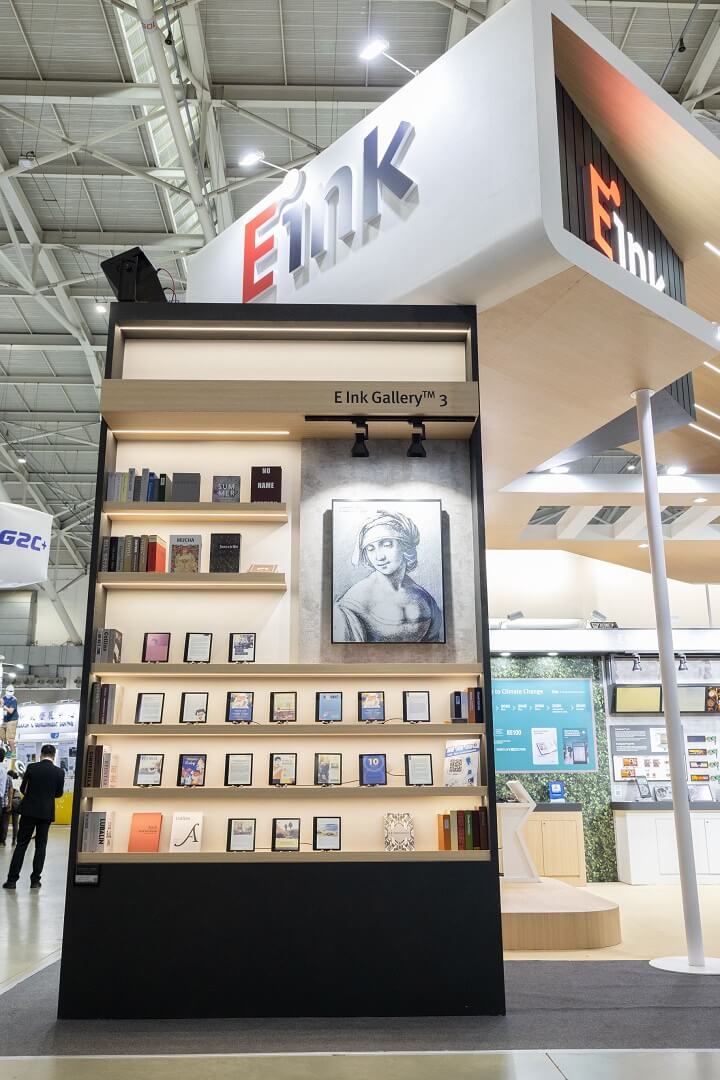TECHNOLOGY DESCRIPTION
Introduction
Learn more about E Ink and how our technology works.
Bi-Stability

No power is needed to hold an image.
E Ink's technology is commonly referred to as "bistable". Bistablility refers to the fact that an image on an E Ink screen will be retained even when all power sources are removed. This means that the display is consuming power only when something is changing. For example, when reading on an eReader, power is only needed when turning to a new page but no power is consumed by the display while reading the page. Bistability significantly reduces the power consumption and is a key reason devices using E Ink have such long battery life. The larger ePaper screen, the more electronic power can be saved compared with the same size LCD screen.

Reflective

No backlight is used.
E Ink displays are referred to as "reflective displays." In an LCD, or "emissive display", light from a backlight is projected through the display towards your eyes. In an E Ink display, no backlight is used; rather, ambient light from the environment is reflected from the surface of the display back to your eyes. As with any reflective surface, the more ambient light, the brighter the display looks. This attribute mimics traditional ink and paper, and users of E Ink displays have said that they do not have the same eye fatigue as with LCDs when reading for long periods of time. Eliminating the need for a backlight significantly increases the battery life versus using a traditional LCD.

E Ink Display

Paper Display

LCD Display

Rugged
Plastic-based films enable durable displays.
E Ink displays are comprised of an ink layer laminated to a plastic film substrate. Depending on the application, product designers may use a traditional glass-based TFT, or utilize our E Ink Mobius plastic-based TFTs.
Plastic-based TFTs allow the end product to be substantially lighter and thinner than products using glass-based TFTs. In addition, glass-based TFTs can be fragile; use of plastic-based TFTs can result in a more rugged end product with less breakage in the electronics due to drops or stress tension.
A 13.3" E Ink displays with a plastic TFT and similar internal components can weigh only 12.3 ounces (349g) as compared to an LCD-based display with smaller screen size 12.9”, which weighs an average of 25.2 ounces (713g).
E Ink also offers a simple segmented product line, E Ink SURF™. In this product line, a drive line is routed to each segment, making for a conformable, rugged, all plastic display, suitable for simple character- or icon-based displays.

Features of Digital Paper

Learn More.
FAQ
Learn more about E Ink and how our technology works.
-
What is the difference between an E Ink® display and an LCD display?
Simply put, E Ink displays reflect the ambient light in a room, exactly like printed paper, while LCD displays use a strong backlight that is modulated using liquid crystals. Because E Ink displays work like a printed page, they are not as tiring on eyes as an LCD screen.
-
How much power does an E Ink Matrix display consume?
E Ink Matrix displays are bi-stable. This means that they only consume power while the display is being updated. No power is required to maintain an image after it has been updated. The power required to for the update process depends on the size of the display but is of the order of microwatts.






